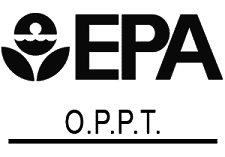ASDWA Submits Comments to EPA on Current TSCA SNUR to Prevent Drinking Water Impacts
 On June 17, ASDWA submitted comments on EPA’s Significant New Use Rules (SNURs) on Certain Chemical Substances under the Toxic Substances Control Act (TSCA) (20-5.B). This is the second letter of comment that ASDWA has submitted as part of a new effort that urges EPA to use TSCA authorities as part of a holistic approach that includes preventing harmful chemicals from entering drinking water sources and the environment. This approach is important for chemical substances that have the potential impact drinking water sources and human health, and that may present unforeseen risks in the future, such as was the case with PFAS when manufacturing began in the 1960s. ASDWA’s comments highlight concern about the chemical – PMN Number: P-17-86, Chemical Name(s): Cycloalkyl, bis(ethoxyalkyl)-, cis- (generic) (P–17–86, chemical A) and Cycloalkyl, bis(ethoxyalkyl)-, trans- (generic) (P–17–86, chemical B) – based on:
On June 17, ASDWA submitted comments on EPA’s Significant New Use Rules (SNURs) on Certain Chemical Substances under the Toxic Substances Control Act (TSCA) (20-5.B). This is the second letter of comment that ASDWA has submitted as part of a new effort that urges EPA to use TSCA authorities as part of a holistic approach that includes preventing harmful chemicals from entering drinking water sources and the environment. This approach is important for chemical substances that have the potential impact drinking water sources and human health, and that may present unforeseen risks in the future, such as was the case with PFAS when manufacturing began in the 1960s. ASDWA’s comments highlight concern about the chemical – PMN Number: P-17-86, Chemical Name(s): Cycloalkyl, bis(ethoxyalkyl)-, cis- (generic) (P–17–86, chemical A) and Cycloalkyl, bis(ethoxyalkyl)-, trans- (generic) (P–17–86, chemical B) – based on:
- Identified concerns for reproductive and organ toxicity, and systemic and developmental effects.
- A drinking water lifetime exposure limit (DWEL) for adults at 1.3 mg/l and for infants at 0.33 mg/l.
- Potential drinking water toxicity at concentrations that exceed 330 ppb.
- Releases from surface water, moderate to rapid migration to groundwater, and persistence in the environment.
Our comments also continue to emphasize that preventing contaminants from entering drinking water sources is much more effective and less expensive than having to remove them after contamination occurs, and is essential for protecting public health and the economy. Read ASDWA’s comments here.

